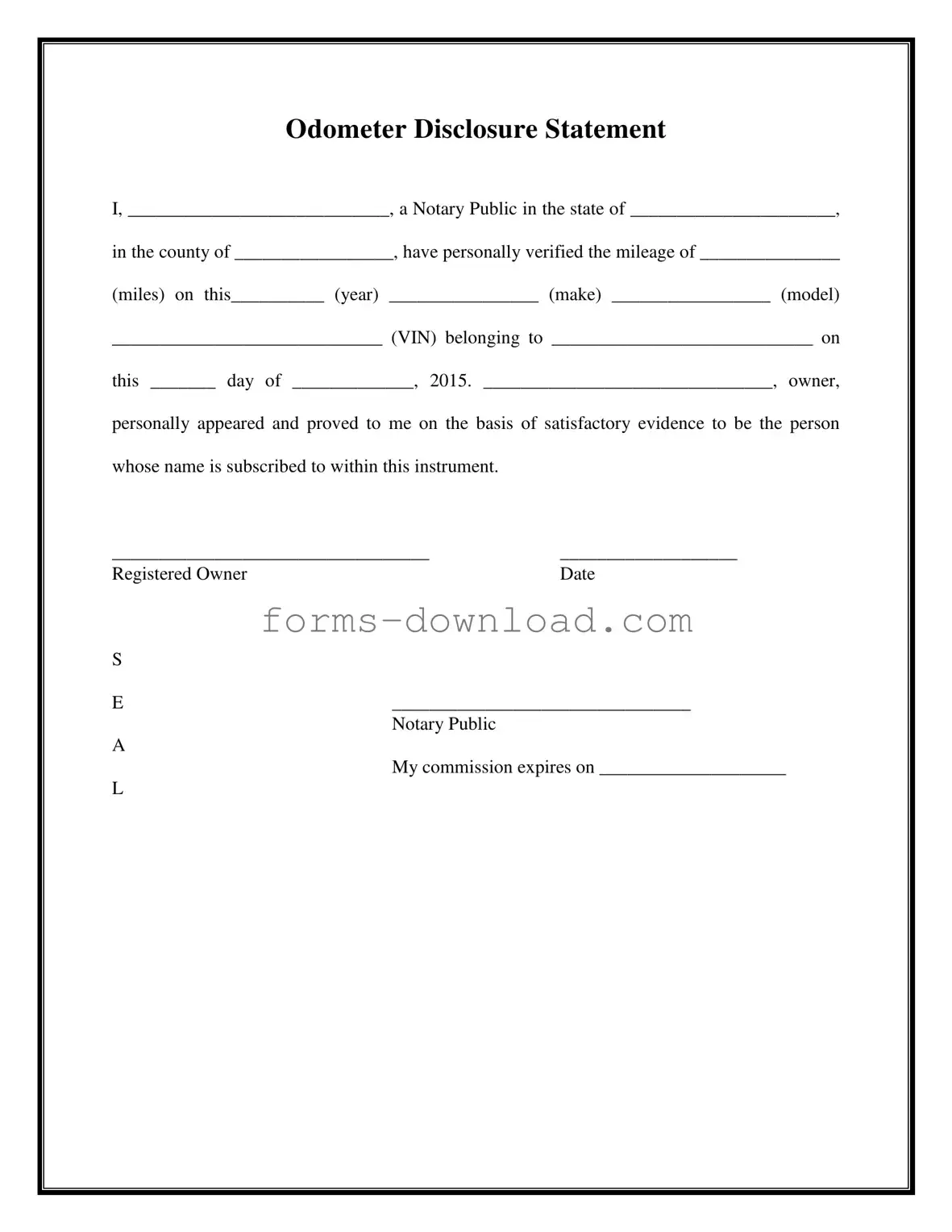Blank Notarized Odometer Statement Form
The Notarized Odometer Statement is a legal document used to confirm the mileage of a vehicle at the time of sale or transfer. This form is typically completed by a notary public, who verifies the information provided by the vehicle owner. It serves to protect both the buyer and seller by ensuring accurate odometer readings are documented.
To fill out the Notarized Odometer Statement, please click the button below.
Launch Editor Now

